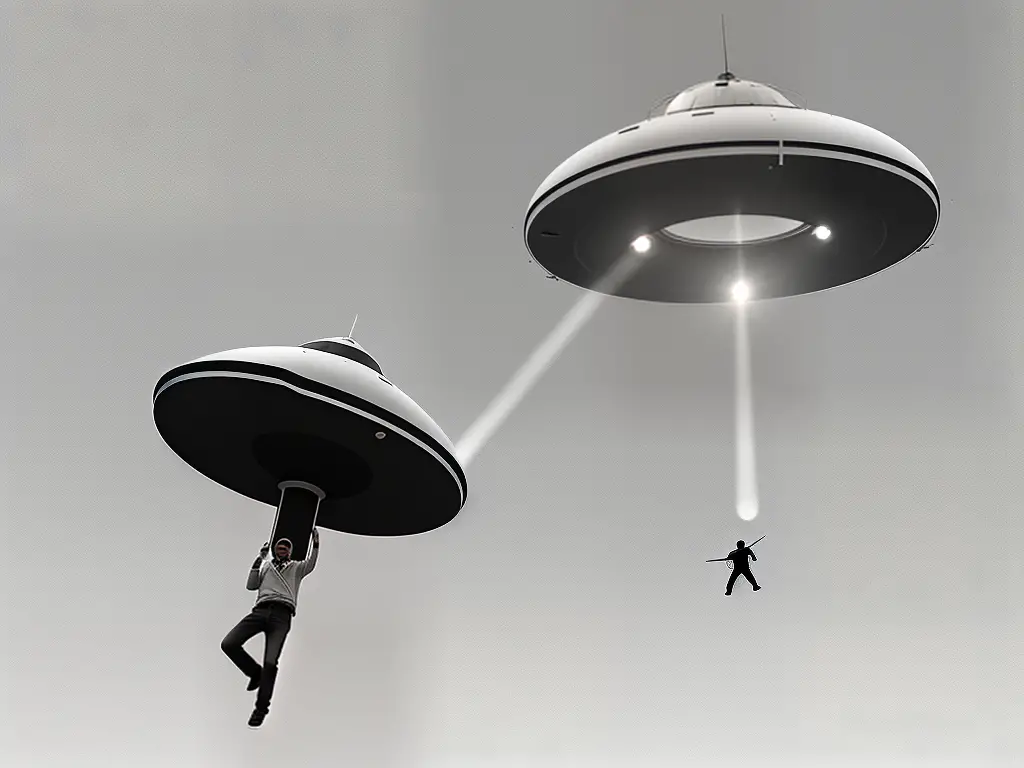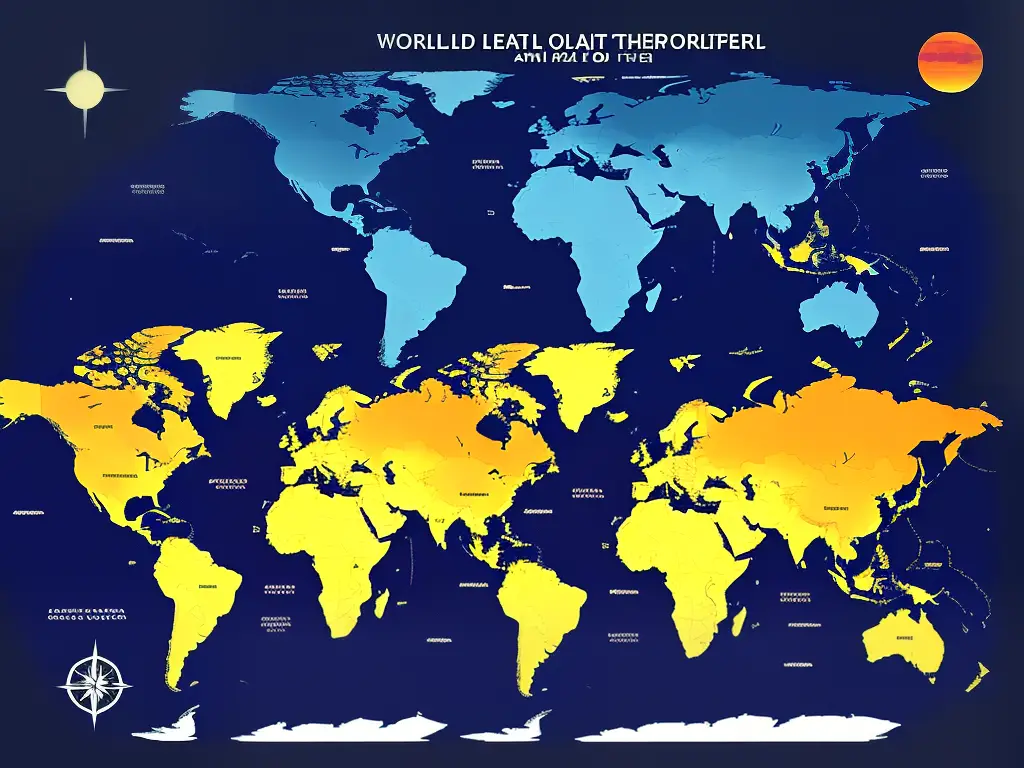The mystery of extraterrestrial life has fascinated humanity for centuries, prompting scientific research, philosophical debates, and inspiring countless tales in popular culture. As we gaze into the vast cosmos, the possibilities for otherworldly encounters seem both intriguing and daunting. In our quest to understand whether we are alone in the universe, various facets of human knowledge have been drawn upon to decode the enigma of our celestial neighbors. This investigation delves deep into historical accounts, scientific discoveries, cultural influences, and psychological aspects that shape our understanding of the extraterrestrial phenomenon.
The Long History of Extraterrestrial Encounters
Interest in extraterrestrial life has a long history, with accounts of sightings and incidents suggesting the existence of beings from other planets. One of the earliest documented cases of a potential extraterrestrial encounter is the 1561 celestial phenomenon over Nuremberg, during which witnesses reported seeing strange objects and lights in the sky, followed by a loud crash.
The interpretation of these stories has varied over time, with some suggesting they are evidence of encounters with extraterrestrials, while others believe they may have been natural phenomena or human inventions that were misinterpreted.
The credibility of these claims often hinges on the credibility and reliability of the witnesses involved, as well as the consistency of their accounts. The 1947 Roswell incident in New Mexico is one of the most famous instances of alleged extraterrestrial contact, involving a crashed flying saucer and the recovery of debris by the US military. Despite numerous investigations and the declassification of documents, there is still no concrete evidence to prove or disprove the extraterrestrial hypothesis.
The 1961 Betty and Barney Hill abduction case is another well-known incident that purportedly involved contact with extraterrestrials. The Hills claimed that they were abducted by aliens and taken aboard a spacecraft, where they were subjected to various medical examinations before being returned to Earth. Although the case remains unexplained, skeptics argue that the Hills may have experienced sleep paralysis, hypnosis, or other psychological phenomena that led to their memories of the abduction.
Mass media has played a significant role in shaping the perception of extraterrestrial encounters, often sensationalizing and exaggerating the details of reported incidents. In many cases, popular culture has also influenced the way people interpret or recall their own experiences, leading to a growing number of alleged encounters with extraterrestrials. Conversely, mass media also allows for the rapid dissemination of information and evidence that can debunk or challenge the validity of extraterrestrial encounter claims.
In recent years, tantalizing new evidence has reignited debates about extraterrestrial life. In 2017, the New York Times reported on a secret Pentagon program that investigated encounters between military pilots and unidentified aerial phenomena (UAPs), many of which displayed highly advanced technology and flight capabilities. While these incidents do not necessarily prove the existence of extraterrestrial life, they do raise questions about what or who might be responsible for these unexplained encounters. As technology continues to advance and our understanding of the universe expands, the possibility of finding definitive evidence of extraterrestrial life remains an exciting and intriguing prospect.

The Search for Extraterrestrial Intelligence (SETI)
One of the key efforts in exploring the existence of extraterrestrial life is the Search for Extraterrestrial Intelligence (SETI), a scientific endeavor that aims to discover evidence of extraterrestrial civilizations, primarily by searching for radio signals emitted by potential life forms. Founded in 1984, the SETI Institute is a non-profit organization dedicated to this specific cause. It conducts research in various fields such as astronomy, planetary science, and biology, all focused on finding traces of extraterrestrial life. The Institute’s work aligns with the observations of unexplained aerial phenomena, fostering collaboration with other institutions and providing resources for the general public to promote awareness and understanding of the search for life beyond Earth.
To detect potential extraterrestrial signals, SETI researchers use various methods and technologies. The most well-known method is the use of radio telescopes, which can pick up radio wave emissions from distant sources in the universe. Projects such as the Allen Telescope Array, a network of connected radio telescopes located in California, are dedicated to finding and analyzing radio signals that could potentially originate from extraterrestrial life. Additionally, SETI researchers explore optical signals through the use of powerful telescopes designed to detect laser pulses or other forms of optical communication.
However, the search for extraterrestrial life faces many challenges and limitations. First and foremost, the vastness of the universe requires researchers to assess vast amounts of data, which may result in the discovery of false positives or misinterpretation of naturally occurring signals. The extremely weak nature of potential extraterrestrial signals, which gradually dissipate as they travel through space, poses another difficulty. SETI researchers must develop innovative data-processing techniques to separate potential extraterrestrial signals from naturally occurring cosmic noise.
Moreover, the search for extraterrestrial intelligence relies on the assumption that potential extraterrestrial life forms would communicate using the same methods and technologies that humans use. However, this assumption might be flawed, given that different life forms may have developed entirely distinct communication techniques. Some argue that the focus on radio or optical signals might be an example of human bias, and alternative approaches might be necessary to truly uncover the existence of other civilizations.
As advancements in technology continue to improve our ability to search and analyze the cosmos, the ongoing discussion about the possibility of encountering extraterrestrial life becomes increasingly relevant. To better understand the likelihood of life beyond Earth, it is crucial to consider the inherent challenges and limitations of this search, from signal detection to potential differences in communication methods. In response to this quest for extraterrestrial intelligence, astrology has developed into a multidisciplinary field, focusing on the potential for life in the universe.

Astrobiology and Exoplanetary Research
Astrobiology explores the origins, evolution, and distribution of life within our solar system, as well as the habitability of extraterrestrial environments. One of the primary objectives of this scientific area is to find clear evidence of past or present life forms on celestial bodies such as Mars, Europa (a moon of Jupiter), or Enceladus (a moon of Saturn). By employing various robotic missions and telescopes, researchers are able to analyze these potential extraterrestrial habitats and search for signs of life, furthering our understanding of the ongoing quest to discover extraterrestrial intelligence.
Exoplanetary research focuses on studying planets outside our solar system, known as exoplanets. Advanced telescopes, such as the Kepler Space Telescope and the Transiting Exoplanet Survey Satellite (TESS), have been instrumental in the discovery of thousands of exoplanets. Scientists study these distant worlds to understand their composition, atmosphere, and potential habitability.
The search for Earth-like planets in the habitable zones around their host stars, where conditions might be suitable for liquid water and possibly life, is one of the primary goals of exoplanetary research.
The Drake Equation is a probabilistic expression developed by Dr. Frank Drake in 1961, meant to estimate the number of active, communicative extraterrestrial civilizations in the Milky Way galaxy. This equation factors in variables such as the average rate of star formation, the fraction of those stars with planetary systems, the percentage of planets that can potentially support life, the fraction of these planets that actually develop life, the likelihood of intelligent life evolving, the probability of these civilizations developing communication technologies, and the lifespan of such civilizations.
Although the equation is subject to many uncertainties, it serves as a framework for discussing the various factors that might influence the existence and detectability of extraterrestrial civilizations.
The Search for Extraterrestrial Intelligence (SETI) is an ongoing scientific endeavor that aims to detect potential communication signals from extraterrestrial civilizations. This primarily involves analyzing radio and optical signals picked up by powerful telescopes, for patterns that might indicate artificial origins. While this effort has not yet revealed any definitive evidence of extraterrestrial contact, the search continues to expand and refine its methods. Technological advancements, including the upcoming launch of the James Webb Space Telescope, are expected to propel the search for extraterrestrial life even further. This next-generation telescope will possess powerful capabilities that will significantly enhance our ability to identify potential biomarkers, such as oxygen or methane, in the atmosphere of exoplanets.

Ancient Astronaut Theory
Detection of these biomarkers, coupled with a better understanding of their astrobiological context, could indicate the presence of life and contribute to the ongoing dialogue about our potential for encounters with extraterrestrial beings. One such theory to consider is the ancient astronaut theory, a hypothesis suggesting that extraterrestrial beings visited Earth in the distant past and potentially played a significant role in the development of human civilization. Proponents of this theory often cite various ancient artifacts, architectural structures, and mythological stories as evidence of interactions between humans and advanced alien civilizations. The idea has captured public imagination since the 1960s when Swiss author Erich von Däniken popularized it in his influential book, ‘Chariots of the Gods?’
One of the key observations made by ancient astronaut theorists is the prevalence of advanced engineering feats found in ancient cultures across the globe. They argue that these structures, such as the Egyptian pyramids, the Nazca Lines in Peru, and the Moai statues on Easter Island, may have required an understanding of science and technology beyond the capabilities of the humans at the time. Proponents contend that extraterrestrial visitors may have helped design and construct these monuments, or perhaps shared crucial knowledge with early civilizations.
Another aspect of ancient astronaut theories revolves around similarities found in mythologies and religious texts from various cultures. Ancient astronauts proponents often examine stories of gods descending from the heavens, wielding powerful tools, and interacting with humans. They draw comparisons to contemporary accounts of UFO sightings and alien encounters, suggesting that humanity’s concept of gods may have originated from contact with these advanced beings. In addition, some theories explore the possibility that extraterrestrial intervention may have shaped human development at the genetic level, such as theories surrounding the Anunnaki, a race of deities mentioned in ancient Mesopotamian texts.
There are numerous controversies surrounding ancient astronaut theories, however. Critics argue that these hypotheses are based largely on speculation and subjective interpretations of ancient texts and artifacts. Additionally, the notion that ancient civilizations lacked the ability to create such impressive structures on their own is often seen as undermining the accomplishments of these societies. Archaeologists and historians have provided alternative explanations that demonstrate how these feats could have been achieved through human ingenuity alone.
Another contentious aspect of theories surrounding encounters with extraterrestrials is the lack of direct evidence to support claims of their visitation. Despite extensive research, there has yet to be reliable physical proof confirming the involvement of aliens in human history. Critics also question the selective nature with which proponents assemble their arguments, accusing them of cherry-picking evidence that fits their narrative while ignoring the broader context of human history. Overall, while theories about extraterrestrial encounters provide an intriguing perspective, their validity remains a subject of debate among scholars, historians, and the general public.

Psychological Factors Influencing Belief in Extraterrestrial Life
Adding to the debate, various psychological factors contribute to the belief in extraterrestrial life and encounters, shaping individual perceptions of reality. A significant aspect influencing the belief in aliens is culture. Media, especially science fiction, has been instrumental in popularizing ideas of alien life, UFOs, and other out-of-this-world phenomena. Through movies, television shows, and books, people are exposed to stories about alien encounters and their possible implications. This exposure can promote a belief in extraterrestrial life and the likelihood of encounters, even when faced with a lack of concrete evidence.
Another crucial element that influences belief in extraterrestrial life and encounters is cognitive biases. People are subject to several biases when processing information and forming beliefs. A common bias that can foster belief in extraterrestrial encounters is the availability heuristic. This involves relying on the examples that come to mind when evaluating a particular concept. News stories, anecdotes, and other such information about extraterrestrial encounters make these events more cognitively available and thus more believable. Additionally, the confirmation bias, which is a tendency to search for and focus on evidence supporting one’s preconceptions while ignoring contradictory information, can also contribute to the belief in such encounters.
Personal experiences, particularly those that are not easily explained, can further lead to a belief in extraterrestrial encounters. Some individuals might have memories or anecdotes that they interpret as evidence for contact with extraterrestrials, such as seeing strange lights in the sky or experiencing episodes of missing time. While skeptics may argue that these experiences can be attributed to more mundane explanations, personal interpretation and emotional investment make these accounts particularly compelling for the individuals involved.
A desire for meaning and purpose in life also contributes to belief in extraterrestrial encounters. Encounters with alien life forms can imbue one’s life with a sense of cosmic significance, casting the individual as a chosen participant in an extraordinary event. This belief can provide a sense of purpose and connection to a broader, more mysterious universe. Likewise, belief in extraterrestrials can offer solace to those who feel disenfranchised or marginalized by society, providing an alternative framework for understanding and coping with social realities.
The psychology of belief in extraterrestrial life and encounters is complex and multifaceted. Factors such as culture, cognitive biases, and personal experiences all contribute to the formation and maintenance of such beliefs. As humans continue to explore the cosmos and broaden our understanding of the universe, the possibility of encountering extraterrestrial life remains a captivating and thought-provoking concept that will undoubtedly continue to shape our beliefs and perceptions of reality.

The History and Classification of UFO Sightings
Delving into the history of UFO sightings, which date back centuries, ancient texts and artwork have speculated about mysterious objects in the sky. However, it was not until the 20th century that UFO sightings gained widespread attention. The term “Unidentified Flying Object” or “UFO” was coined by the United States Air Force in the 1950s to describe aerial phenomena that could not be easily identified or explained. Some of the most iconic cases, such as the 1947 Roswell incident and the 1952 Washington D.C. sightings, fueled public curiosity and debate surrounding the possibility of extraterrestrial life, further contributing to the development of beliefs in this realm.
To better understanding and categorize the various types of encounters with UFOs, astronomer and UFO researcher J. Allen Hynek developed a classification system in the 1970s. The system defines three basic types of encounters: Close Encounters of the First Kind (sightings within 500 feet), Close Encounters of the Second Kind (physical evidence of a UFO), and Close Encounters of the Third Kind (the observation of extraterrestrial beings). Later researchers expanded this system to include additional types of encounters, such as abduction experiences and direct communication with UFO occupants.
One of the best-documented cases of a UFO encounter is the 1980 Rendlesham Forest incident, involving United States Air Force personnel stationed at an airbase in the United Kingdom. Over several nights, multiple witnesses observed strange lights and objects in the sky above the base, and later ventured into the forest to investigate what appeared to be a landed craft. Though skeptics dismiss the event as a case of misidentifying natural phenomena or top-secret military experiments, others consider the Rendlesham Forest incident a prime example of a genuine encounter with extraterrestrial beings.
Another well-documented incident is the 1976 Tehran UFO case, in which Iranian Air Force fighter pilots attempted to intercept a brightly lit, cylindrical object over the city. However, they were repeatedly thwarted by the UFO’s inexplicable speed and maneuverability, and their aircraft experienced unexpected electrical malfunctions. Despite thorough investigations by both Iranian and US intelligence agencies, no satisfactory explanation was found for the Tehran UFO encounter, leaving many to wonder if it was indeed an authentic meeting with visitors from another world.
The ongoing study of UFOs raises important questions about humanity’s place in the universe and the possible existence of extraterrestrial life. As researchers collect and analyze data from UFO sightings, encounters, and alleged abductions, the search for credible evidence of intelligent life beyond our planet remains a topic of great interest for both researchers and the general public alike. Although skeptics often attribute UFOs to natural phenomena, misperceptions, or hoaxes, the existence of genuinely unexplained cases continues to captivate and encourage the discussion of extraterrestrial encounters.

The Phenomenon of Alleged Alien Abductions
One fascinating aspect of extraterrestrial encounters is the phenomenon of alleged alien abductions, which has been a subject of debate for many years. Stories of people being taken by otherworldly beings from their homes, cars, or other locations can be found across cultures and time periods, often featuring vivid and detailed accounts with striking similarities between reports. Despite skepticism from most experts about the reality of these events, the intriguing nature of such experiences continues to fuel public curiosity and inspire conversations about the possibility of life beyond Earth.
One of the most striking aspects of the abduction phenomenon is the consistency in the experiences reported by those who claim to have been taken by aliens. In many cases, abductees describe being transported to a spacecraft where they are subjected to various forms of experimentation or examination. Common themes include paralysis, telepathic communication, and the presence of small, grey-skinned beings with large, almond-shaped eyes. This consistency in abduction reports spans across cultural and geographic boundaries, indicating that something more than mere coincidence or cultural influence may be at play.
In order to better understand these events, some researchers have turned to scientific explanations for the abduction phenomenon. One such explanation involves sleep paralysis, a condition in which an individual is briefly unable to move or speak upon waking or falling asleep. During episodes of sleep paralysis, individuals may experience vivid, lifelike hallucinations, which could be interpreted as an encounter with extraterrestrial beings. Some have suggested that sleep paralysis experiences account for a significant portion of alleged alien abductions.
Another scientific explanation for the abduction phenomenon is the concept of recovered memories. Critics argue that the similarities in alien abduction accounts may be due to therapists and hypnotists inadvertently leading their patients to recall false memories. In this view, many of the reported abductions may actually be the result of individuals reconstructing fragmented memories under the guidance of an authority figure, rather than the result of genuine extraterrestrial encounters. The debate surrounding the phenomenon is also fueled by the lack of physical evidence in many abduction cases.
In recent years, the fascination with encounters with extraterrestrials has seen a noticeable increase in focus on the psychological and sociological aspects of the abduction phenomenon. Some researchers propose that the prevalence of abduction narratives may be linked to broader cultural anxieties, such as fear of the unknown, technological advancements, or the loss of individual autonomy. As individuals continue to grapple with the mysteries of the universe and the possibility of life beyond our planet, the interest in extraterrestrial encounters remains prevalent.

How Popular Culture Shapes Our Understanding of Extraterrestrial Encounters
Popular culture has played a significant role in shaping our understanding of extraterrestrial encounters, with movies being a prominent aspect of this relationship. Classic film examples such as Steven Spielberg’s E.T. the Extra-Terrestrial (1982) and Close Encounters of the Third Kind (1977), along with the iconic Star Wars franchise, have contributed to the development of a collective consciousness around extraterrestrial life. These movies often portray extraterrestrial beings as possessing exceptional intelligence, advanced technology, and mysterious motives, qualities that evoke both curiosity and trepidation in audiences and further fuel the fascination with encounters beyond our world.
Television shows, too, have played a pivotal role in depicting extraterrestrial encounters. The long-running science fiction series The X-Files, for example, revolved around two FBI agents investigating unexplained phenomena, often involving encounters with otherworldly beings. This show not only expanded on the common speculation that extraterrestrial beings might walk among us, but also delved into the idea of secretive government conspiracies to cover up these occurrences. As a result, such series contributed to the development of popular conspiracy theories and paranoia regarding the government’s possible knowledge of extraterrestrial encounters.
Literature has likewise been instrumental in molding the public’s perception of encounters with extraterrestrials. H.G. Wells’s classic novel, The War of the Worlds, published in 1898, was one of the earliest works to envision an extraterrestrial invasion, significantly shaping the genre of science fiction. Orson Scott Card’s Ender’s Game is another notable example, exploring the potential consequences of an interstellar conflict between humans and an insect-like alien species. Long before movies and television shows delved into this subject matter, literature has provided a fertile ground for the imagination and speculation about the experiences and ramifications of encountering extraterrestrial beings.
It is also important to recognize that popular culture’s depiction of extraterrestrial encounters mirrors and reflects society’s beliefs and anxieties at different points in history. For instance, the menacing and destructive alien invasions that appeared in films and literature during the Cold War era were often interpreted as allegories for the fear of nuclear annihilation or the spread of communism. In contrast, more recent depictions highlight the potential for cross-species collaboration to address global challenges or deepen our understanding of the cosmos.
Finally, it is worth noting that popular culture not only reflects societal beliefs and concerns but can also play a role in shaping them. Works like Carl Sagan’s novel Contact, which posits a more scientifically grounded and optimistic approach to extraterrestrial contact, serve as an influential counterpoint to the predominant anxieties and apprehensions that pervade our society’s collective imagination. By offering alternative perspectives on how we may one day interact with extraterrestrial beings, popular culture can help inform, enrich, and even redefine our expectations and beliefs surrounding encounters with alien life forms.

Ultimately, the search for extraterrestrial life and the understanding of encounters with otherworldly beings is an ongoing and complex journey. By examining the multiple dimensions that contribute to our perceptions of these enigmatic experiences, from science and history to psychology and pop culture, we can better navigate the intricacies of this fascinating topic. Regardless of our individual beliefs, the exploration of the extraterrestrial realm continues to challenge the human imagination, stretch the boundaries of scientific inquiry, and inspire hope for future discoveries that may reshape our understanding of our place in the cosmos.